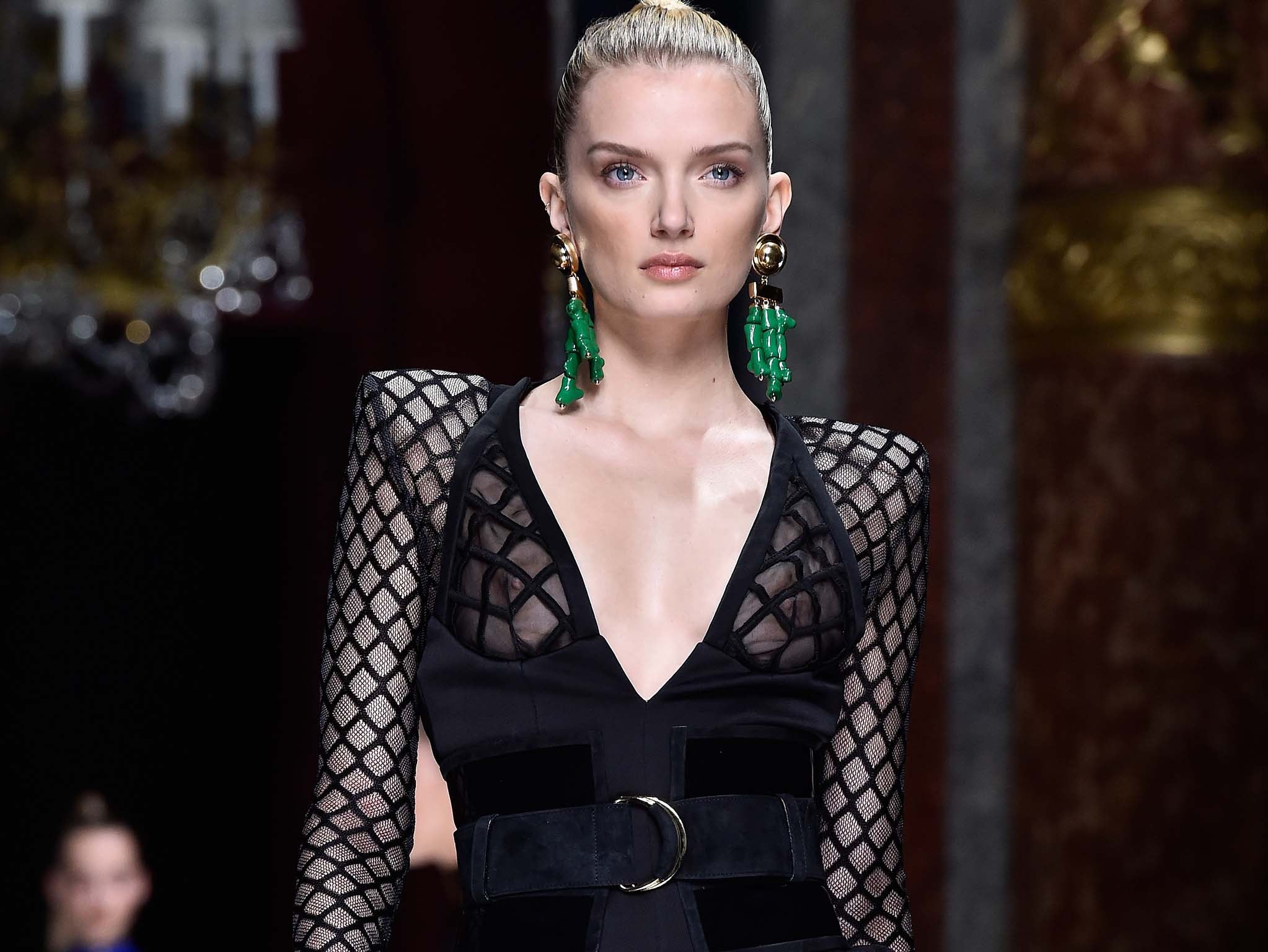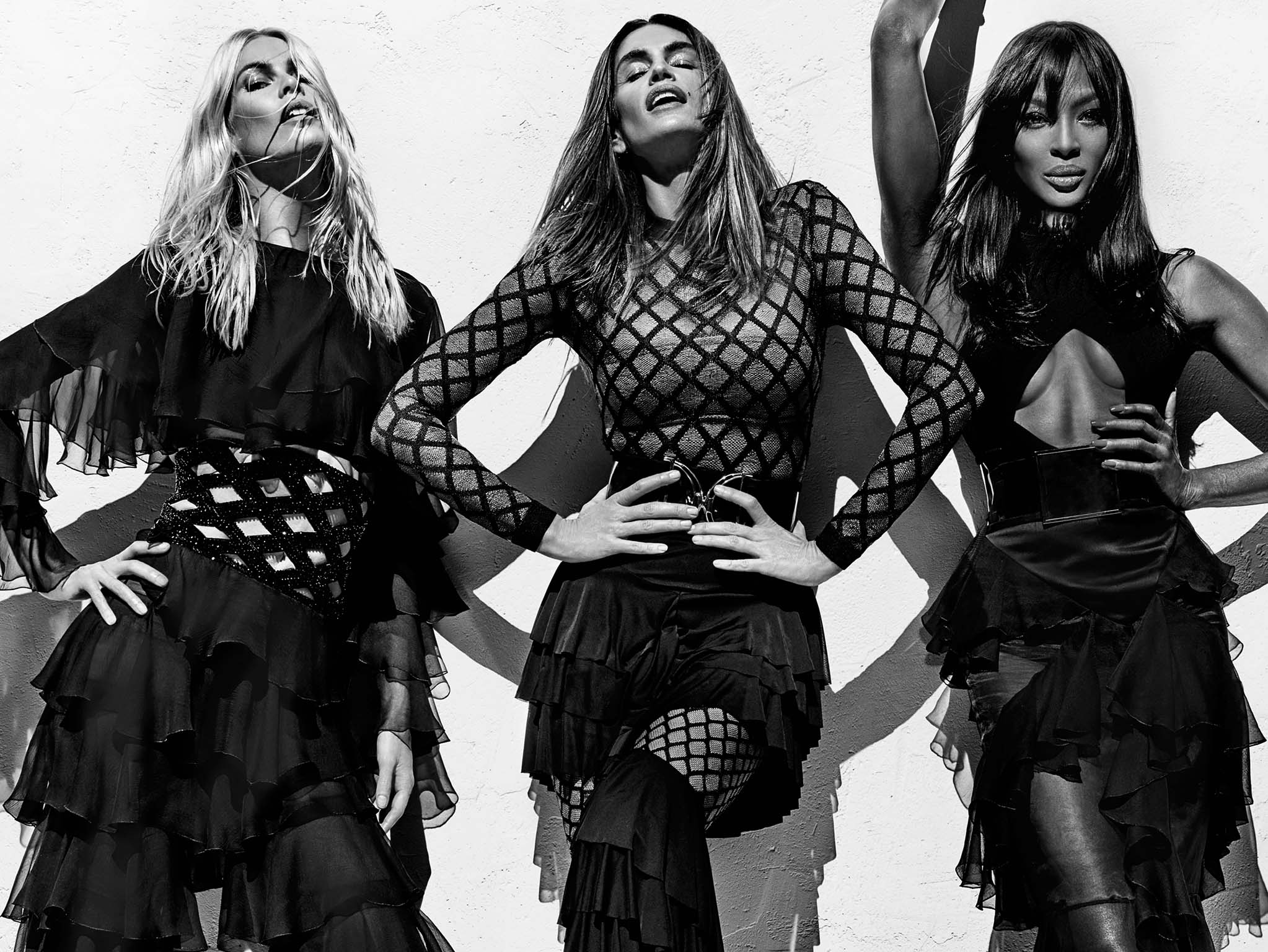Balmain's ready-to-wear revival collection is not for the faint-hearted
The spring/ summer collection is flashy, which in many eyes equals trashy

A decade or so ago, Balmain was a fuddy-duddy, little-remembered label whose most successful recent mass product launch was a seventies line of faux chevaux (Balmain Hair Couture; it’s still going today). Oscar de la Renta helmed the haute couture until 2002, satisfying its founder’s love of “Jolie Madame” suits and dressing the world’s richest women, richly. After his tenure, the house languished.
That was until a ready-to-wear revival, first under Christophe Decarnin, and latterly under Olivier Rousteing. If Decarnin made Balmain hip, under Rousteing’s reign it has become higher profile than ever before. Hence the currently circulating rumours that a Balmain buy-out is lined up, with Qatar-based Mayhoola – who also own Valentino – being front-runner of a purported three suitors, and a purchase price of half a billion euros mooted. Balmain’s turnover is around £24 million, double the amount reported in 2009 and a far cry from the company’s nadir in 2004, when it filed for bankruptcy protection.
Those turnover figures are relative small fry (Louis Vuitton’s 2015 sales were reported at £7 billion, according to Forbes) but Balmain punches well above its current financial weight. For a house founded in the traditions of mid-century haute couture (Pierre Balmain established his name in 1945), its approach to fashion today is strikingly modern. Not in terms of the clothes – by god, no. They’re tight and short and jewel-encrusted, and often feel very old fashioned indeed, circa 1987 just before the markets crashed.

But in terms of the fuss kicked up around them, Balmain is decidedly 21st-century. Balmain’s designer Olivier Rousteing was the first designer to hit a million followers on a social media platform (him, not the house); he’s friends with celebrities like the Kardashians, and recruits them for his fashion show audiences and advertising campaigns. And as a result Balmain caused genuine riots when it collaborated with the mass retailer H&M for a range in December (London’s Regent Street store included a phalanx of police to control the crowd). Judging by the rise in figures between 2009 and today, it’s also impacting at the highest levels.
Monsieur Balmain’s signature “Jolie Madame” look is translated, in English, as “Pretty Woman.” In conjunction with Rousteing’s clothes, it’s not mid-century matriarchs that come to mind, but rather Julia Roberts’ turn turning tricks in the film that shares the name. His clothes are tight against the body, high against the leg, low against the check – frequently all at once, with cut-outs, and embellishment, and a great big brass zip skewering the rear, revelation promised at its unfastening. They’re not for the faint-hearted.
Lots of people have a lot of problems with Balmain. It’s flashy, which in many eyes equals trashy. I myself– affectionately – described a look from the spring/summer 2016 Balmain collection as resembling Joan Collins caught in a lobster net, with broccoli florets as earrings. Rousteing’s Balmain is an acquired taste. But it’s one I can see the appeal of, even if I’d never wear it myself.
I can also see the point of it, and the profit. For a house with the immense visibility and name recognition of Balmain, there’s still a startling amount of unexplored territory. Its perfumes – key titles Amber Gris and Ivoire – are charmingly old-fashioned and out of step with its current image. They’re obscure and underexposed, for a label which is anything but. The Pierre Balmain diffusion line remains relatively under the radar (and often sold at a heavy discount) while the main line continues to skyrocket in price. There’s yet to be a real Balmain accessory success. In short, you’ll make your money back, if you’ve half a billion euros to spare and join the bidding war.
Join our commenting forum
Join thought-provoking conversations, follow other Independent readers and see their replies
Comments